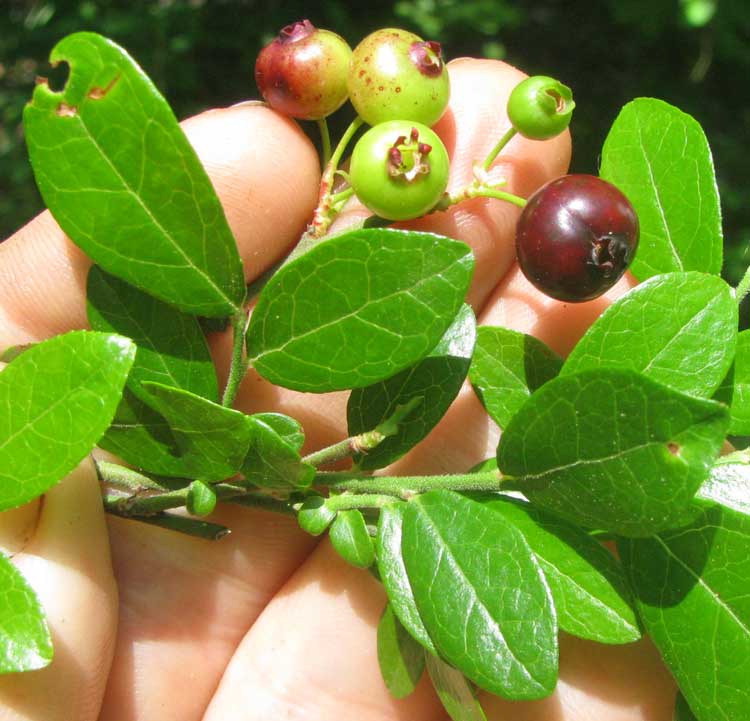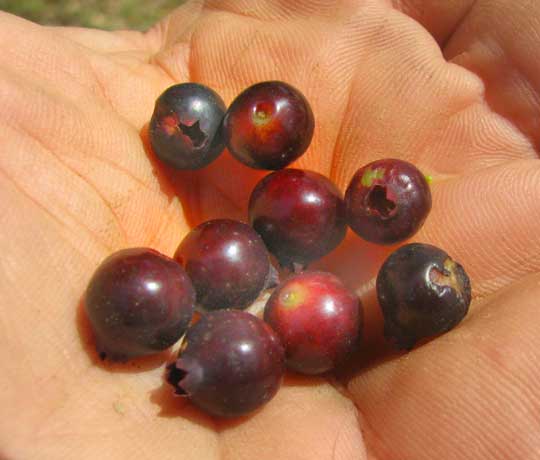Excerpts from Jim Conrad's
Naturalist Newsletter

from the April 15, 2012 Newsletter issued from the woods of the Loess Hill Region a few miles east of Natchez, Mississippi, USA
DEERBERRIES FRUITING
Deerberries, VACCINIUM STAMINEUM, our main local blueberry, are dense, head-high bushes of the forest understory, and they're bearing ripe fruits now, shown above. A green, developing berry prettily topped with a frilly, burgundy, collar-like calyx is shown below:

Most berries aren't ripe yet but if you look around you can get a mouthful ready to eat, as shown below:

Finding ripe Deerberries now is interesting because this is one of many seasonal occurrences this year happening much earlier in the season than normal. In my April 18, 2004 Newsletter issued from near here, Deerberry plants were "abundantly covered with small, whitish flowers." On our plants now, the corollas already have fallen off.
Deerberry shrubs occur throughout nearly all the eastern US except the northernmost states and this year I bet that everywhere their flowers and fruits appear earlier than normal.
from the April 18, 2004 Newsletter issued from the woods of the Loess Hill Region a few miles east of Natchez, Mississippi, USA
DEERBERRIES FLOWERING
Along dry, sandy ridges in forested uplands nowadays you run into compact, much-branched, head-high bushes abundantly covered with small, whitish flowers. It's Deerberry, also known as Squaw Huckleberry and even Gooseberry, VACCINIUM STAMINEUM. It's in the same family as azaleas, the Heath Family, and the same genus as blueberries. In fact, Deerberries are blueberries.
I'll bet that as you travel eastward from here and the loess mantling our landscape becomes thinner, Deerberry becomes more and more common. That's because, in common with many members of its family, it prefers well drained, acidic soil. Our loess tends toward being basic, so I was surprised to find Deerberry here. The species occurs from Maine to Missouri, south to our area. In the Appalachians along dry sandstone ridges I've seen this species forming dense thickets.
One book says it's called Deerberry because its fruits stay green and bitter, very unlike most other blueberries, and thus "only the deer will eat it."